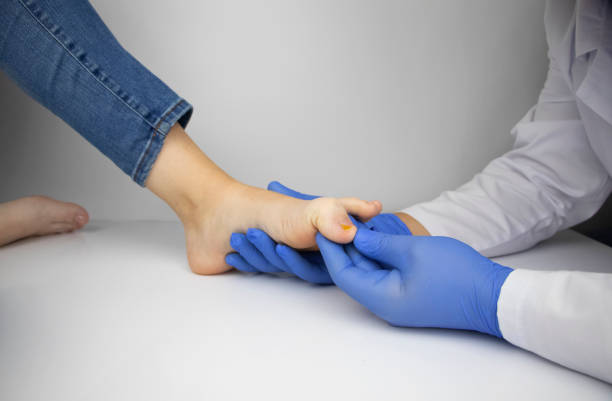
Laser therapy has emerged as a versatile tool in the realm of medical treatment, offering distinct modalities tailored to various conditions. Understanding the disparities between cold and hot laser therapy is paramount for informed decision-making in healthcare. While both methodologies harness the power of light for therapeutic purposes, their mechanisms and applications diverge significantly. Delving into these disparities sheds light on their respective efficacies and suitability across a spectrum of ailments. Let’s explore the nuances between cold and hot laser therapy, deciphering their roles in modern medical practice.
What is the Difference Between Cold and Hot Laser Therapy?
During cold laser therapy, different wavelengths of low-level light are used to stimulate tissue healing on a cellular level. Unlike high-intensity laser treatments, which can cause burns, these wavelengths do not generate any heat. The device is placed directly on the area of pain or injury, and treatment typically lasts just minutes.
This noninvasive procedure is not a cure-all, but it can help with a variety of conditions. It can reduce swelling, help speed the formation of new blood vessels, and help the body form bone tissue. This makes it useful for patients with herniated discs, sciatica, or carpal tunnel. It can also be effective for treating injuries to tendons, ligaments, or muscles.
Hot laser therapy works in a similar way to cold laser therapy but with one significant difference. Instead of creating a feeling of warmth on the skin, it promotes vascular flow and supports angiogenesis. The body’s ability to grow new blood vessels is enhanced, and this can be beneficial for conditions like diabetic neuropathy.
Acupuncturists often use hot laser therapy for their clients who are uncomfortable with needles, as the beams can activate acupoints and encourage healing without piercing the skin. It is also an option for those who are concerned about the side effects of taking medications. However, this method is not recommended for pregnant women or people with cancer.
Cold Laser Therapy
Cold laser therapy, sometimes called low-level laser treatment (LLLT), uses photons of light to interact with cells in the body. The light stimulates enzymes in the cell, which help it exchange chemicals and make energy. It also encourages the formation of new stem cells and other chemical reactions that support tissue repair.
This type of laser can relieve pain, reduce inflammation, and speed healing. It has been shown to work in many studies and can be used for conditions such as herniated discs, sciatica, plantar fasciitis, arthritis, tendonitis, and more.
It is non-invasive and has few side effects. However, it is not a cure-all and may require multiple sessions to see results. It is also important to find a physician who is trained in using cold laser therapy, and patients should be careful not to purchase at-home devices.
Cold laser therapy holds particular significance in podiatric care, offering a non-invasive approach to address various foot ailments. Conditions such as plantar fasciitis, Achilles tendonitis, and neuropathy commonly afflict individuals seeking podiatric treatment. Cold laser treatment provides a targeted solution by stimulating cellular repair mechanisms and reducing inflammation in affected tissues. For instance, in the treatment of plantar fasciitis, cold laser therapy targets the inflamed fascia, promoting tissue regeneration and alleviating pain. Its ability to penetrate deep into the foot structures makes it an invaluable tool in addressing chronic foot conditions, offering patients relief without the risks associated with invasive procedures.
Additionally, cold laser podiatry treatment showcases promise in fungal nail treatment, offering a non-invasive alternative to traditional medications. By targeting the fungus under the nail bed with light energy, cold laser treatment aids in eliminating fungal infections, restoring nail health, and alleviating associated discomfort. Through the integration of cold laser therapy into podiatric care, our Adelaide podiatrists aim to optimise patient outcomes and provide holistic solutions for foot-related concerns.
Warm Laser Therapy
The laser devices are used to stimulate the body’s natural healing process, which relieves pain and inflammation without medication or surgery. They work by flooding injured tissues with photons that are amplified and focused. They also support the body’s production of new blood vessels and increase circulation to the area. This helps in relieving swelling and promoting tissue growth.
This therapy is a great option for patients who may not want to undergo surgical treatments, or for those who have been prescribed medications and are experiencing side effects. While the results are not immediate, the benefits are long-lasting and the therapy is safe for most patients.
During laser treatment, a technician will place the laser over the damaged area for 30 seconds to 9 minutes, depending on the severity of the condition. Most patients experience no pain or discomfort during the session, and they can return to their daily activities immediately following the treatment.
In podiatry, warm laser therapy is also commonly used in fungal nail treatment. It is proven to be effective at eliminating fungus under the nail bed and under the skin of the toe. It is also effective at treating athlete’s foot, toenail thrush, and warts on the feet and hands. The treatment can also help with the relief of diabetic neuropathy by encouraging the formation of new nerves.
Fungal Nail Treatment
When nails get infected with fungus, they become thick, brittle, and yellowish. They can be painful and embarrassing for sufferers especially since fungus affects the toes. Eventually, the fungal infection can spread to other toenails and can even cause the skin around the nails to break down. It can also lead to serious infections in the body.
The most common treatment for nail fungus is medication. Fungus-fighting pills like terbinafine or itraconazole are available by prescription. These antifungal tablets can be taken every day for several months. They can damage the liver so blood tests may be required to monitor liver function. These medications aren’t suitable for those with poor circulation or who are taking other drugs.
If home treatment isn’t working, see a foot doctor (podiatrist) for advice. They will trim the nails and file away their dead layers to help the medicine penetrate deeper into the fungus. They can also send a sample of the fungus to the lab for diagnosis and prescribe stronger medication if needed. They can also recommend a urea nail polish or cream to thin the nails, which will make the medicine work better.
In conclusion, the disparities between cold and hot laser therapy offer diverse avenues for therapeutic intervention across various medical domains. Cold laser therapy, characterised by its non-invasive nature and cellular-level stimulation, presents an effective solution for a spectrum of conditions, particularly in podiatric care where it addresses foot ailments like plantar fasciitis and fungal nail infections. Conversely, hot laser therapy, while sharing similarities with cold laser treatment, focuses on promoting vascular flow and angiogenesis, offering relief for conditions such as diabetic neuropathy. Both modalities underscore the evolution of medical technology toward minimally invasive, targeted treatments that prioritise patient comfort and long-term efficacy. As research continues to unravel their mechanisms and refine their applications, cold and hot laser therapies stand as pillars of innovation in modern medical practice, promising enhanced patient outcomes and holistic solutions for a multitude of health concerns.





